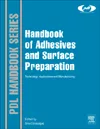Q&A

Could you provide information on bonding plastics?
We receive numerous questions pertaining to bonding plastics with little or no further details. Since the term plastic is so generic, it must be defined more specifically. The necessity of specifying the exact plastic is paramount due to differences in surface energies. As a general rule, the lower the surface energy of the solid, the more difficult it may be to bond using an adhesive. In comparing plastics to metals, the surface energy of plastics may often be 20 to 40 times less than that of metal. For example, the surface energy of aluminum is above 800 dynes/cm, and copper is above 1,100 dynes/cm. Plastics fall below 100 dynes/cm and most below 50 dynes/cm. As a general rule, the greater the hardness and the higher the melting point, the higher the surface energy. Thus, the softer organic solids have much lower melting points and corresponding far lower surface energies.This same concept of low surface energy is used in mold-release agents whereby a thin film is sprayed onto the mold. In this case, these mold-release agents have surface energies generally in the range of 10 to 24 dyne/cm. Let's compare this to various plastics as shown in the table.
As seen from this table, the spread between these plastics could be considered not all that great especially when considering that metals are in the 800+ range and glass is between 300-500 dynes/cm. But as practice tells us, it is far easier to bond ABS than polyethylene with adhesives even though they are only 11 dynes/cm apart from each other in surface energy. This is why it is so important to be specific about the type of plastic being bonded.
The numbers shown in the table are without any pretreatment to the plastic. Sandblasting, etching or corona treatment will of course drastically affect the bond strengths with adhesives. Therefore, the evaluation of any adhesive must also take into account the costs related to pretreatment. In the past year, at least one new adhesive has been introduced that requires no pretreatment for bonding to polyethylene or polypropylene.
-ROGER LOHMAN
Surface / Surface Energy (dynes/cm)
Polytetrafluoroethylene (Teflon) -- 18Polypropylene -- 29
Polyethylene -- 31
Polystyrene -- 33
Polyvinyl chloride -- 39
ABS -- 42
Polycarbonate -- 42
Polyethylene Terephthalate -- 43
Nylon 6,6 -- 43
Links
Looking for a reprint of this article?
From high-res PDFs to custom plaques, order your copy today!




